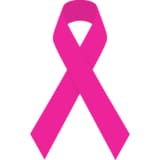
 In 1979 Penney Laingen was dealing with the horrible situation of having a husband who was being held prisoner during the Iran hostage crisis. She decided to place yellow ribbons on trees in her neighborhood, as well as making yellow ribbons that people could wear, as a way of showing support for both her husband and the other people being held hostage. This was the first time that a ribbon was used publicly as a way to silently voice support.
In 1979 Penney Laingen was dealing with the horrible situation of having a husband who was being held prisoner during the Iran hostage crisis. She decided to place yellow ribbons on trees in her neighborhood, as well as making yellow ribbons that people could wear, as a way of showing support for both her husband and the other people being held hostage. This was the first time that a ribbon was used publicly as a way to silently voice support.
About 10 years later the group Visual AIDS decided to use a bright red ribbon to represent awareness and support for AIDS victims. This trend caught on very quickly, with the New York Times declaring 1992 as “The Year of the Ribbon”.
That was the same year that the highly recognized pink ribbon became an idea. The Susan G. Komen Breast Cancer Foundation started handing out pink hats to breast cancer survivors who would participate in their Race for the Cure. In 1992, they started handing out pink ribbons to everyone who participated in the race, as a way to show their support to fellow racers who were cancer survivors.
The next big step cam later that year. Alexandra Penney, who was the editor of Self magazine, was working on their second annual Breast Cancer Awareness Month issue. This issue was inspired by Evelyn Lauder, the vice president of the famous makeup company Estee Lauder, and a breast cancer survivor herself. Alexandra decided to consult with Evelyn on the second annual issue when Evelyn had a great idea. She decided to create a pink ribbon and had all the big cosmetic stores in New York City distribute them. This was so popular that eventually the ribbons were put on cosmetics counters all across the United States.
That year they handed out over 1.5 million ribbons, each one which was accompanied by a card that explained how to give self breast exams. They also collected over 200,000 petitions asking the White House to give additional funding for breast cancer research.
The next year, in 1993, the popularity continued to grow. Avon decided to launch a pink rhinestone brooch in the shape of the now popular pink ribbon, with proceeds going to research. In 2 years sales from the pin raised over $10 million for breast cancer research. All of this visibility helped make everyone more aware of the need to research. Many people believe that because of the ribbons and the visibility they brought, that there were directly responsible for the federal funding for breast cancer research to increase from around $100 million in 1991 to over $550 million in 1996. This helped pave the way for ribbons and additional research money for causes dealing with autism, epilepsy, alzheimer’s and many, many more.
Although medicine has made great strides in the treatment of various diseases and disorders, we must not become complacent. There are thousands of people each year who are fighting for their health, and some who lose that fight. Showing these people and their families support by wearing ribbons and clothing that show your support is something that can have more of a far reaching positive impact then you can ever imagine. You can find a complete list of awareness ribbons and colors here.



